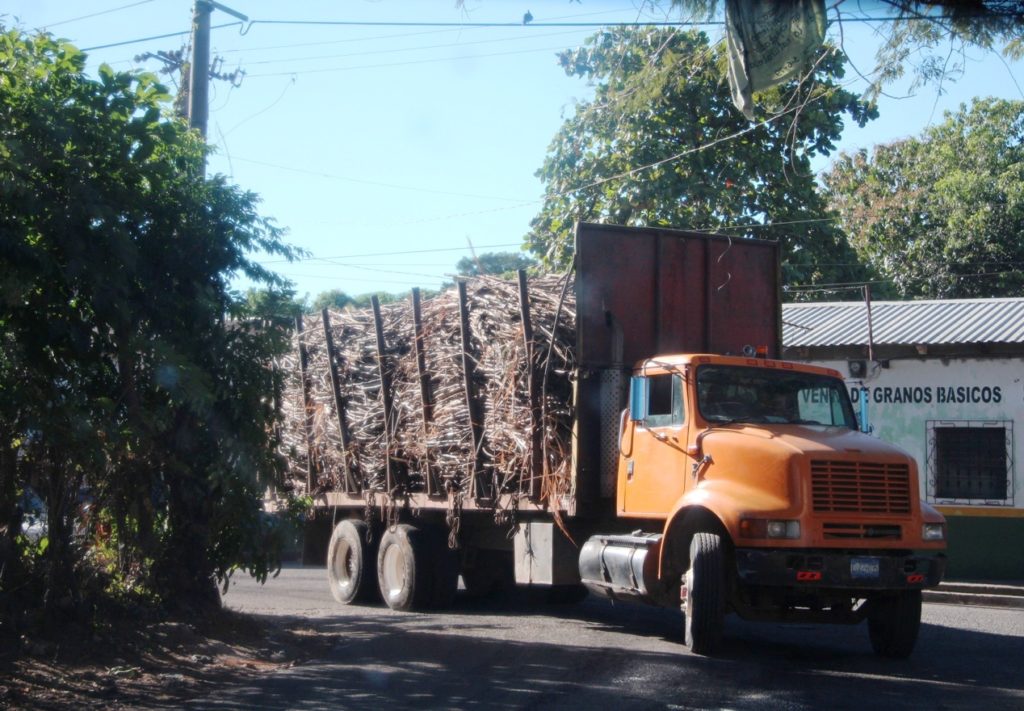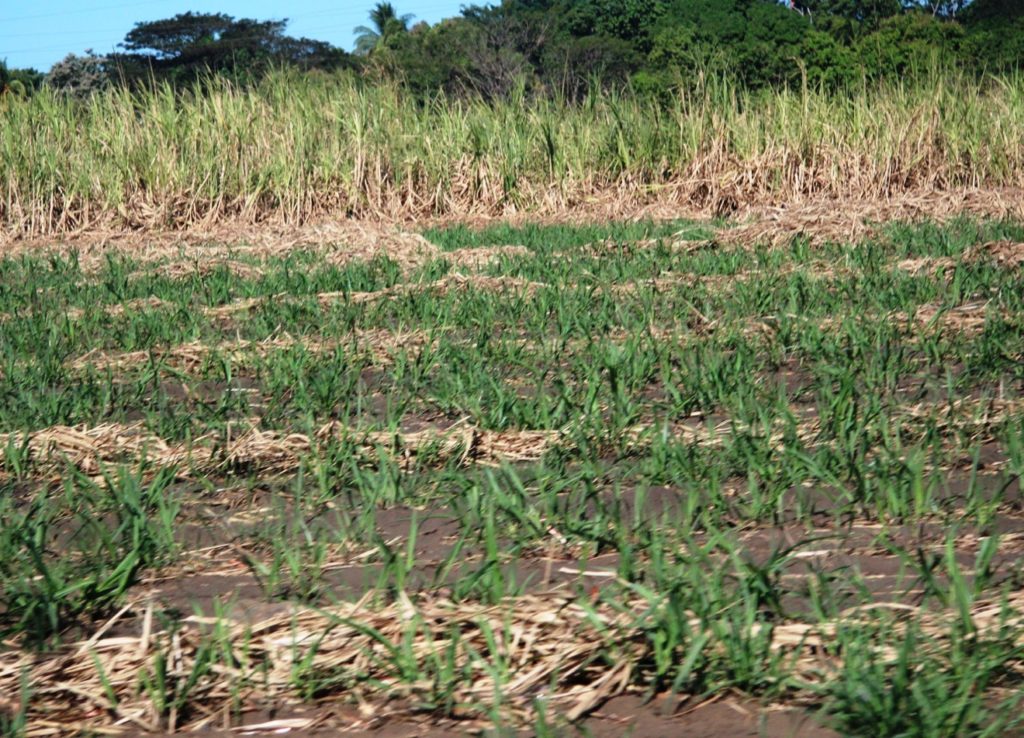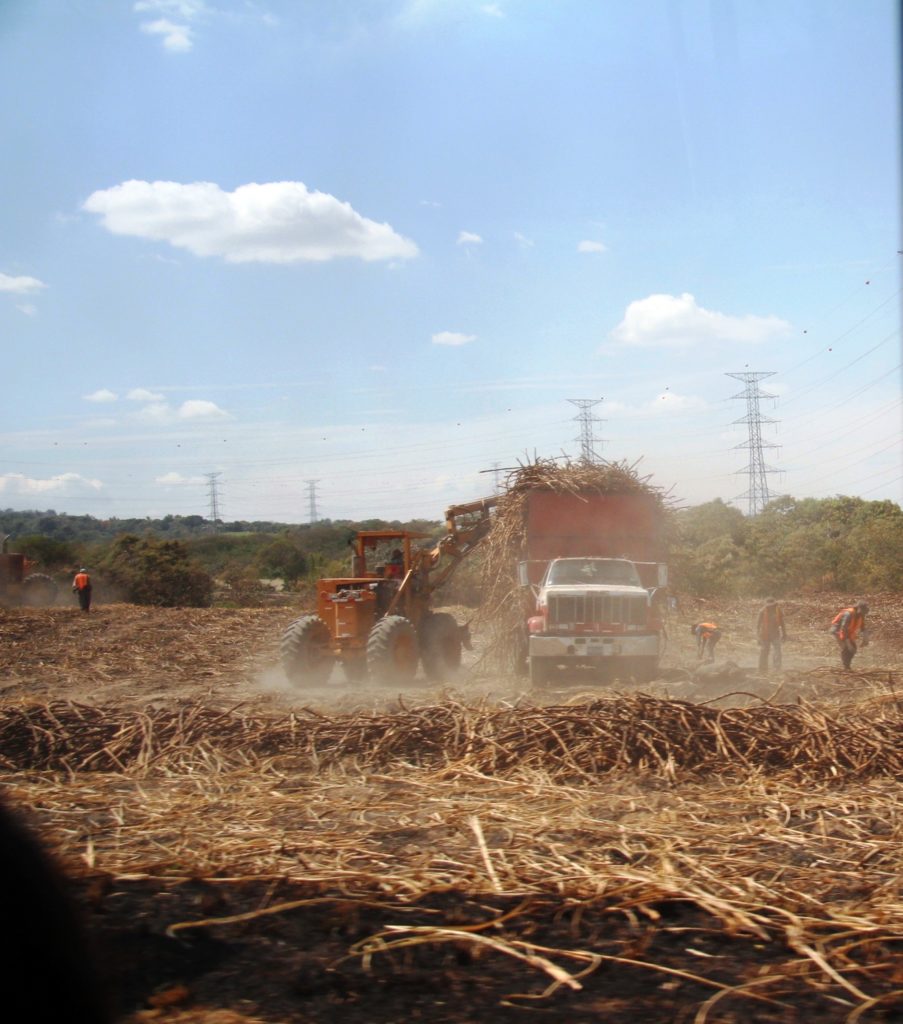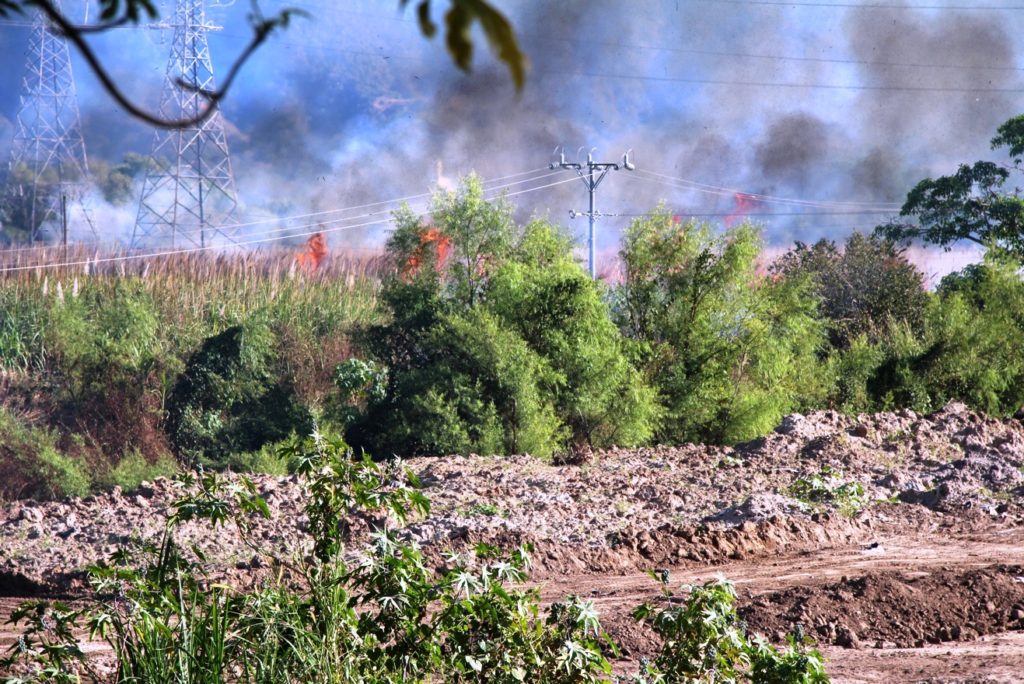Esta historia se escribe en Español = This story is also written in Spanish here
“Despite working long hours, the salaries do not increase; they remain minimal”
Editor’s Note: Interviewing a sugarcane worker has been on our “bucket list” for some time now. It is impossible to spend any time in the rural areas of El Salvador without seeing sugarcane fields stretching as far as the eye can see from the roads to the volcanoes. On the rural roads, as well as on the highways, the huge tractor trailers heaped full of cut sugarcane leave one breathless, particularly if people are riding on top of those monstrous loads!

Another reason we wish to personally interview someone in the sugarcane industry is to get firsthand information about all we are reading and hearing about insuficiencia renal cronica (Spanish for Chronic Kidney Disease or CKD of unknown origin), now found from southern Mexico to Panama, occurring only along the Pacific coast, predominately among sugarcane workers. 20,000 deaths of workers over the past two decades are blamed on this industry making this crisis worthy of study.
Jose is a supervisor/manager of 388 sugarcane workers in a local cooperative. We are curious to hear his experiences and share his perspective to see if he can shed some light on CKD. He has worked all the jobs in the industry for many years and provided us with a wealth of information about growing cane.

Have you always worked in the sugarcane fields?
No, as a child I worked in the cotton fields when cotton was a more dominant crop. I went to school through second grade and have been working ever since. I am 56 years old.
We understand you are a supervisor of a sugar cane cooperative?
Yes, I manage and am responsible for 1,056 acres of sugarcane. We have 388 workers.
What are some of your specific responsibilities?
I am in charge of the whole operation – planting, fertilizing, and harvesting the crop, as well as supervising the workers. For example, I make sure the workers report to their specific work areas assigned. I act as a crew leader.

How were you personally selected as manager?
Over the years I have worked in all the various job capacities involved in the industry and moved my way up through the ranks. When my five boys were kids, they all came along with me to help in the fields.
How long is a typical work- day for cane workers?
It varies. Typically this should be a four-hour job, but some workers can complete their assigned area in two to three hours by their own choice if they have another job to go to and don’t take breaks. Others take longer.

Is cane work considered seasonal or full-time?
For the rest of the crew, it is seasonal working four months a year; however, I work all year round. In October we prepare the soil using all our personnel. In November we cultivate the crops. Every six years we plant a new crop. We maintain and fertilize the plants every year. We are always checking for disease. We fertilize using a machine after one month and again after three months.
When do you burn the crop and why?
After one year we burn it and then cut it by hand using machetes to make sure it has more juice in it and also because it is cheaper to harvest that way. We can get rid of dried leaves easier by hand than machine. One person can cut two or three cane stalks at a time.

Are there pests in the fields?
Yes, mice, snakes, rabbits, and raccoons are common.

What is your experience with workers having CKD?
A few workers have gotten sick and the company had to take them to the hospital. We require them to wear protective masks in the field when working around chemicals. We also require them to drink water frequently and take breaks. Some workers are in too big of a hurry and want to avoid those steps.
During the 1970s and 1990s, in cotton cultivation companies were using harmful chemicals and left some in storage containers that leached into the soil contaminating both it and the water supply. Those chemicals were shipped away. Some were outlawed.
What is the salary of a sugarcane worker in your cooperative?
$5.85 per day plus land to cultivate. I receive $126 every two weeks.
What is your greatest joy?
Working!
What are your hopes?
Continued good health and seeing each child and grandchild finish school
What is the most difficult part of living in El Salvador?
Despite working long hours, the salaries do not increase; they remain minimal.
Editor’s Note: Boston University’s School of Public Health is at the forefront of concentrating blood and urine sample efforts of CKD in Nicaragua. Their prominent theories include dehydration under the intense hot tropical sun put the workers at risk for heat stress and volume depletion. Whether that susceptibility puts them at risk to the environmental chemical toxins they encounter remains a question yet unproven. What BU does recommend is frequent breaks, shade, and electrolyte supplements for workers. They realize sugarcane workers are doing labor-intensive jobs and are being paid by the amount they cut. BU is doing longitudinal studies in this area.


